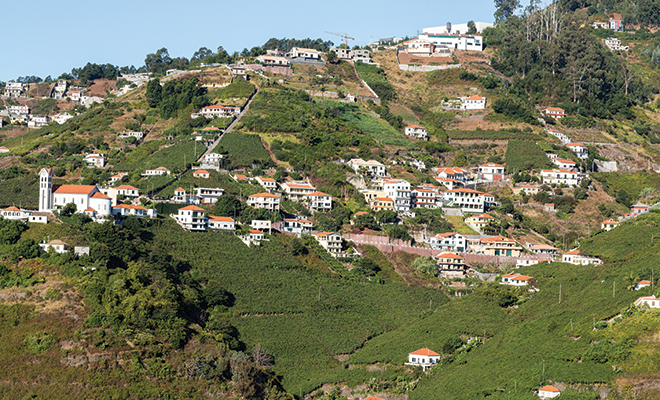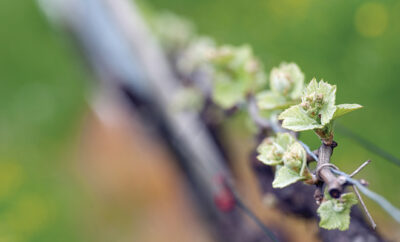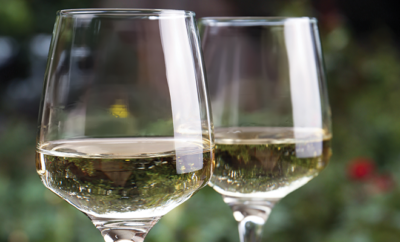
Wines of Portugal
As we ponder our goals and dreams for 2019, let’s add wine exploration to our list! Even if we can’t enjoy a trip to Portugal, we can explore a few highlights of this country’s wine history and thriving culture.
Portuguese wines are misunderstood, lumped together with wines of Spain. Surrounded by influences of the Atlantic Ocean and Spain, Portugal and her quality-focused wine producers have maintained their individuality by cultivating unique grape varieties and maximizing the wildly differing climates, elevations and landscapes, producing whites, reds, rose and bubbly.
Here’s some wine trivia. What color grape juice comes from the purplish-blue wine grape Alicante Bouschet? If you guessed red, that’s correct, but it’s also one of the few red wine grapes that has red skin and produces red wine juice. Most other red-wine grape varietals produce juice that is observed having yellowish to clear hues and achieve their color from the skins during the fermentation process. Alicante Bouschet is so concentrated in color and flavor that it’s often blended with other varietals to increase the richness of color; it can also be bottled singularly. One of my favorites, this varietal has a raspberry-plum profile, making it a beautiful little wine to enjoy with roasted pork, lamb and vegetarian foods. Widely planted in Portugal, this grape varietal was created in 1866 by father and son Louis and Henri Bouschet by crossing grenache with Petit Bouschet, which flourished with low maintenance and hearty production. During Prohibition in America, while the agriculture of wine grapes was legal, this grape traveled from California to the East Coast, where home winemakers would ferment and produce wine, not so legally.
An aromatic white wine, verdelho is one of the top white grape varieties grown in the Madeira region. Bottled singularly or blended with sauvignon blanc for tangy taste or malvasia for sweetness, verdelho ripens easily. It’s rich on the palate and easy to enjoy with spicy foods, fish and salad courses.
A new red wine for cooler nights, touriga nacional is a great partner to stews and hearty soups on winter menus. As a fan of dark currant, bergamot tea and violet, I think wines with touriga have a very nice balance. If you enjoy roasted lamb and poultry, touriga will also reduce nicely, creating a sauce for meats alongside bean dishes and tomato-based casseroles. About 18,000 acres of touriga grow across warmer climates in Portugal. It was originally used in port-styled wines but now it’s recognized by younger winemakers as a blendable, lovely dry wine that’s lower in alcohol, strong in acidic composition and good for aging due to higher tannins.
Thought of as a Spain-specific varietal, tempranillo flourishes especially in the Douro and Dão regions of Portugal. As a high-quality single varietal wine, tempranillo, also known as tinto roriz, goes into red wine blends as well as port-styled wines. Tempranillo is full-bodied, often enjoying its place at the dinner table where a cabernet sauvignon might have been.
A discussion of Portugal must celebrate the country’s contribution to sweet and fortified wines. The blending process of port began in one of the world’s most beautiful wine regions, Portugal’s Douro River Valley. The sweet success of port, or porto, stems from a treaty between England and Portugal clarifying military and trade requirements that made some imports from France, including wine, illegal. The Port Wine Treaty of 1662 provided an entirely open English market for wines of Portugal to thrive.
Generally, you will see two types of port on the shelves today. Although there are both white ports and red ports, ruby port and tawny port styles differ. When the fermenting juice has achieved a level at which half the sugars have been consumed by the yeast, creating alcohol, the winemaker will add brandy to stop the fermentation process, adding that signature sweetness port style wines are known for. At this point the winemaker will create blends of different port styles. Ruby port is brighter in color and may have hints of blueberry and cherry pie with sweetness that heavily coats the tongue. Ruby-styled ports are usually a blend of several vintages and are aged three to five years before bottling. They may be paired with appetizers featuring pungent stilton or blue cheeses. Tawny styles will have a brownish, darker color with flavors of leather, rich roasted nuts and dried fruit that make them perfect for cream sauce dishes, caramelized foods or cheese desserts. This richness comes from aging in barrel a minimum of seven years, more commonly over a period of 10 to 40 years.
If you’re still celebrating the New Year, pour a dash of port into your champagne glass and top with your favorite bubbly. Enjoy this version of a poinsettia and then enjoy more wines of Portugal this year! ■
Sources: winesofportugal.info and the experience of the author.







